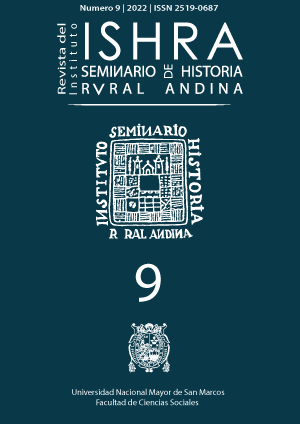Mamasara o saramama, the mother of corn: Reflections on the agency of magical-religious agricultural objects in ancient Peru
DOI:
https://doi.org/10.15381/ishra.n9.22861Keywords:
Agency, animated objects, wak’a, cobs, conopaAbstract
The study of agency is a starting point to understand the nature of the wak’a around relational ontologies in the Andes. Incorporating unpublished information from non-Western worldviews available in documents from the 16th-17th centuries and in ethnographic data, it can be understood how magical-religious agricultural objects (cobs and conopa not previously analyzed) came to possess social identities and to become agents during the agricultural cycle. People communicated with these animated objects through rituals that involved shared drinking, singing, and dancing. The information provided on these pages is relevant to archaeological research, helping to understand the practices that likely shaped the archaeological record and the processes of change.
Downloads
Downloads
Published
Issue
Section
License
Copyright (c) 2022 Alejandro J. Ortiz Luna

This work is licensed under a Creative Commons Attribution 4.0 International License.
AUTHORS RETAIN THEIR RIGHTS:
a. Authors retain their trade mark rights and patent, and also on any process or procedure described in the article.
b. Authors retain their right to share, copy, distribute, perform and publicly communicate their article (eg, to place their article in an institutional repository or publish it in a book), with an acknowledgment of its initial publication in the ISHRA, Revista del Instituto Seminario de Historia Rural Andina.
c. Authors retain theirs right to make a subsequent publication of their work, to use the article or any part thereof (eg a compilation of his papers, lecture notes, thesis, or a book), always indicating the source of publication (the originator of the work, journal, volume, number and date).






